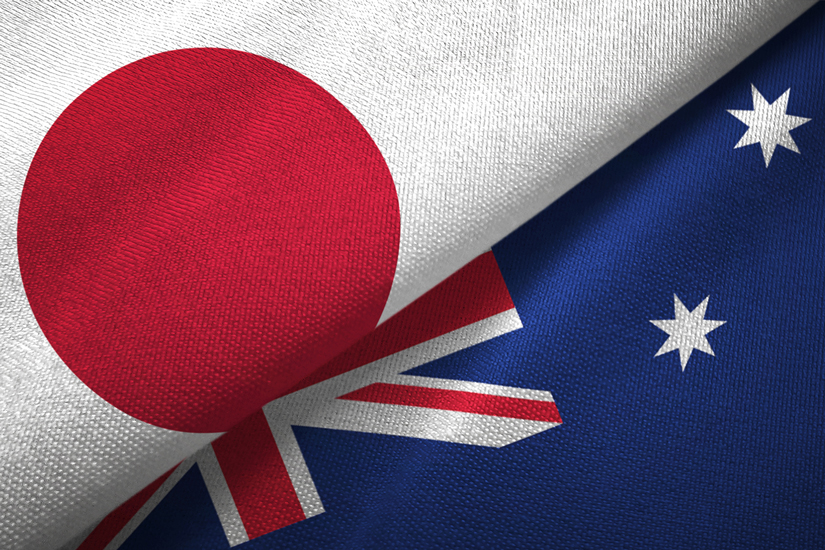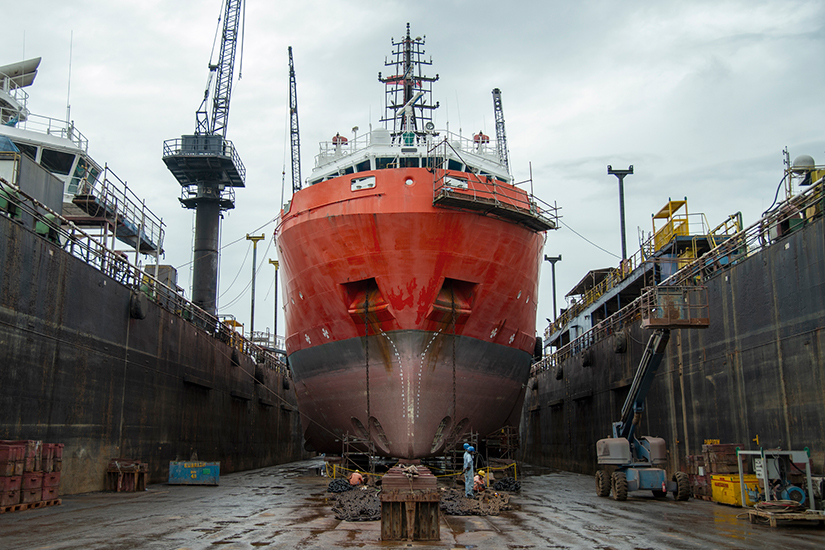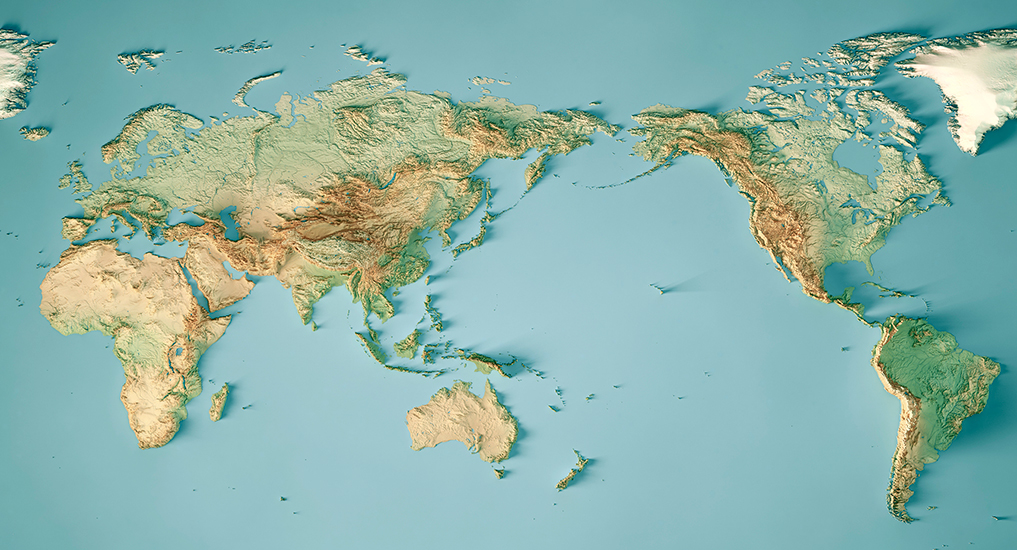Security policy shifts and defense equipment transfers
The history of Japan’s defense equipment transfers began with the stipulation of the Three Principles on Arms Exports in 1967, and subsequently a government opinion which de facto prohibited exports of “arms” was presented in 1976. [1] However, in 2014, Japan presented a policy of Proactive Contribution to Peace, the previous principles were modified, and the Three Principles on Transfer of Defense Equipment and Technology were formulated based on the National Security Strategy of Japan. Due to this, overseas transfers of defense equipment began to be permitted with certain conditions attached. [2] Moreover, in 2022, “Promoting Transfer of Defense Equipment and Technology” was clearly stated in the revised National Security Strategy of Japan, [3] and in March 2023, the NSS implementation guidelines were revised in order to handle international joint development and more actively promote contributions to peace and international cooperation, and the transfer of next-generation fighter aircraft to third countries was allowed.[4]
Moreover, in October 2024, the Government of Australia narrowed down the candidates for providing its next-generation general purpose frigates to the two countries of Japan and Germany, with the new Mogami-class frigate being one of the final candidates, and in response, in November the same year, Japan held discussions in the National Security Council (NSC) about the projects to which the Three Principles on Transfer of Defense Equipment and Technology are applicable, and confirmed that the joint development and production of Australia’s next-generation general purpose frigates qualifies as a project for which overseas transfers can be allowed.[5]
The transfer of the new Mogami-class frigates and its possibilities
To date, Japan and Australia have strengthened the foundation of their cooperation through the Japan-Australia ACSA (Acquisition and Cross-Servicing Agreement), the Japan-Australia Information Security Agreement, the Japan-Australia Agreement concerning the Transfer of Defence Equipment and Technology, and the Japan-Australia RAA (Reciprocal Access Agreement).[6] The selection of the new Mogami-class frigates can be seen as a result of Japan’s full-scale defense equipment transfer efforts through public-private cooperation, coupled with the strengthening of the foundation of Japan-Australia cooperation.[7]

If Japan continues to build a foundation for bilateral cooperation based on its advanced defense development and technological capabilities and operational capabilities going forward, the transfer of defense equipment, as in the example of the new Mogami-class frigates to Australia, can be expected to expand throughout the Indo-Pacific region. Moreover, there is a possibility that this could lead to the transfer of defense equipment such as the new Mogami-class frigates not only to Australia but also to other Commonwealth countries (New Zealand, Canada, etc.).
Security coordination will be enhanced as a result of such defense equipment transfers, and we can expect a shift from the current hub-and-spokes relationship centered on the United States to coordination among willing nations with the United States still at the center (a spider web relationship: a situation in which the United States is at the center of the spider’s web but horizontal cooperation is also possible).
Moreover, if defense equipment transfers further expand to other countries, this could also provide an opportunity for Japan to bear a central role in the security of the Indo-Pacific region. This would also contribute greatly to the OCEAN (One Cooperative Effort Among Nations) concept proposed by Defense Minister Gen Nakatani in the Shangri-La Dialogue held in May 2025. Speaking about the concept, the Minister said the participating nations should “unite in the spirit of OCEAN through continuous dialogues—not to allow the erosion of the rules-based international order, but to restore it; not to ignore accountability, but to uphold it; not to undermine the international public good, but to advance it. Japan pledges to remain at the very heart of these efforts.”[8]
Moreover, expanded defense equipment transfers could lead to revival of the shipbuilding industries of the so-called Western countries located in the Indo-Pacific. New shipbuilding and construction volume worldwide in 2024 consisted of approximately 39 million gross tons in China, a market share of 55%, with South Korea holding a market share of 28%, and Japan a market share of 13% (these three countries combined have a 96% market share; incidentally, the United States has a market share of 1%). [9] Currently, ship construction capabilities in the United States, Australia, and other countries have declined significantly, so this defense equipment transfer will also serve as a starting point for reviving the shipbuilding industries of like-minded countries. In addition, if agreements on repair can be concluded in the countries which have ships in the same family as the Mogami-class frigates, replenishment and repair will become possible anywhere centered on the Indo-Pacific region. This can be expected to broaden the range of activities of ships and prolong their active periods.

As a specific impact on security, in the case that the defense equipment transfer to Australia is successful, at least 35 ships from Japan and Australia in the same family as the Mogami-class frigates will in the future be active in a coordinated manner, primarily in the East China Sea, South China Sea, and Indo-Pacific sea area. In other words, highly interoperable ships constructed and deployed based on the same concept will be able to jointly demonstrate their presence and engage in activities, as a result leading to deterrence of authoritarian states that unilaterally attempt to change the status quo by force, thereby enhancing the stability of the Indo-Pacific region. If the defense equipment transfers further spread to the ASEAN countries, India, and the other Commonwealth countries, the degree of deterrence and stability would be even greater.
Issues in defense equipment transfer seen in the case of the new Mogami-class frigates
So far we have discussed various possibilities for defense equipment transfer, but the issues in Japan’s defense equipment transfers have also become clear.
Firstly, there are issues pertaining to construction outside the country. The first three ships to be transferred to Australia will be constructed in Japan by two companies (at three shipyards) with a successful track record of constructing the Mogami-class frigates, so delivery on time is not expected to be a problem. However, the fourth and subsequent ships will be constructed by Austal, a shipbuilder in Australia, which has limited construction capabilities, and in particular little experience in stealth technologies using steel materials, so passing on Japan’s knowledge and experience will be an important issue. [10] One example of a solution to this issue could be to dispatch Austal’s engineers and on-site staff to Japan for training during the construction of the first three ships, and then to dispatch Japanese engineers and on-site staff to Australia for the construction of the fourth and subsequent ships, but their lack of experience of giving guidance overseas and the language barrier are major issues for Japan’s defense shipbuilding companies.
Secondly, there is the problem of the maintenance of confidentiality by shipyard on-site staff and the ship’s crew. It is stipulated that the Government of Australia is obliged to ensure proper management in Australia, prohibition of unauthorized use, and a prior agreement pertaining to transfers to any third country, [11] but the issue remains of how to guarantee proper management concerning the maintenance of confidentiality at worksites, including after commissioning.
Thirdly, there are the issues pertaining to ongoing maintenance. The issues include the replenishment of broken parts for commissioned ships, repairs of damaged areas requiring technological capabilities, and how to provide guidance regarding repairs and replenishment of technologies and parts when repairs are suddenly required and even in the event of a contingency. In this case, it will also be necessary to consider the provision of equipment for a fee under the Japanese version of FMS (Foreign Military Sales).
Fourthly, there is education for the crews, including deployment education and the transfer of education manuals. For the new Mogami-class frigates, which operate at approximately half the normal crew strength, advanced education and training are necessary because they operate differently from normal frigates and have introduced labor-saving measures. In foreign countries, technological guidance and operational guidance in overseas exports of arms, etc. is being implemented by retired military personnel who are experts in that field. In the case of the new Mogami-class frigates as well, utilizing retirees from the Japan Self-Defense Forces who have maintenance and technological qualifications and rich experience would be a big advantage for Japan and the equipment transfer recipient as well. Regarding this point, in addition to equipment and arms, technological guidance is also included in the FMS from the United States. Utilization of the Japanese version of FMS (technological guidance) with reference to the US version could be considered.

Conclusion
In this paper, we specifically discussed the possibilities for defense cooperation centered on Japan and Australia with reference to the transfer of the new Mogami-class frigates to Australia, and then considered the issues in defense equipment transfers revealed by said transfer.
While the transfer of defense equipment to Australia is no more than one example, there is a large possibility that Japan, with its advanced technological capabilities, operational capabilities, and after-sales service capabilities, will implement full-scale defense equipment transfers. In that kind of case, Japan’s security responsibilities in the Indo-Pacific region will naturally grow larger. Japan must be conscious of the fact that it must prepare for this. For that reason, it will perhaps become necessary to take into account the construction that occurs when there is a defense equipment transfer and the issues such as information protection, ongoing maintenance, education for the crews, etc. required at such a time, and incorporate these issues into the Defense Industrial Strategy (provisional name) [12] which is currently being considered, including defense equipment transfers, and into the next National Security Strategy of Japan, which should include the expansion of Japan’s responsibilities concerning security in the Indo-Pacific region.
(2025/10/31)
Notes
- 1 “Japan's Policies on the Control of Arms Exports,” Ministry of Foreign Affairs of Japan, accessed on October 30, 2025.
- 2 “Three Principles on Transfer of Defense Equipment and Technology,” Cabinet Secretariat, April 1, 2014.
- 3 “National Security Strategy of Japan,” Cabinet Secretariat, December 16, 2022, p. 21.
- 4 “Implementation Guidelines for the Three Principles on Transfer of Defense Equipment and Technology,” Cabinet Secretariat, partially revised on March 26, 2024.
- 5 “Transfer of FY2024-Class Frigates In the Case that Japan Implements the Joint Development and Production of Australia’s Next-Generation General Purpose Frigates,” Ministry of Foreign Affairs of Japan, November 28, 2024.
- 6 For the overview of each type of agreement, refer to the FY2025 Defense of Japan (White Paper), Ministry of Defense, August 2025, p. 355.
- 7 Yasuhiro Kawakami, “The Development History and Strengths of the Mogami-class Frigate――Why Did the Government of Australia Decide to Introduce It?,” International Information Network Analysis (IINA), September 24, 2025 (in Japanese).
- 8 “Minister of Defense Nakatani’s Participation in the 22nd IISS Asia Security Summit and Meetings with Defense Ministers,” Ministry of Defense, accessed September 21, 2025.
- 9 “Shipbuilding-Related Materials,” Shipbuilders’ Association of Japan, March 2025, p. 1.
- 10 The ships constructed by the Austal shipyard in Australia are primarily high-speed ships, most of which have light aluminum hulls that are capable of high speeds. Furthermore, Austal has little successful track record of constructing vessels with stealth characteristics.
- 11 “Agreement between the Government of Japan and the Government of Australia concerning the Transfer of Defence Equipment and Technology,” Ministry of Foreign Affairs of Japan, 2014.
- 12 “Japan’s Defense Industry and Equipment Transfer,” Ministry of Defense, October 2024, p. 31.

